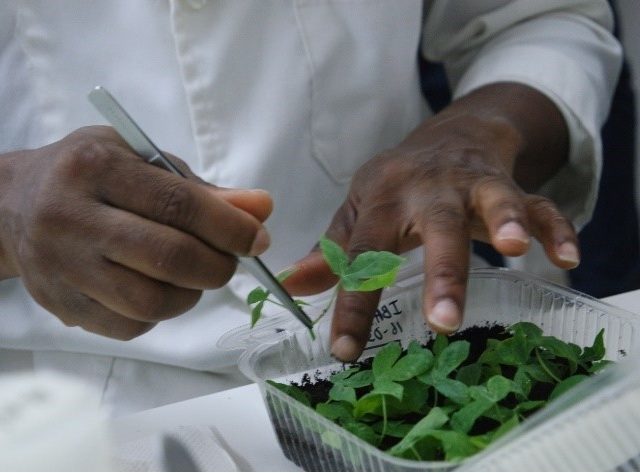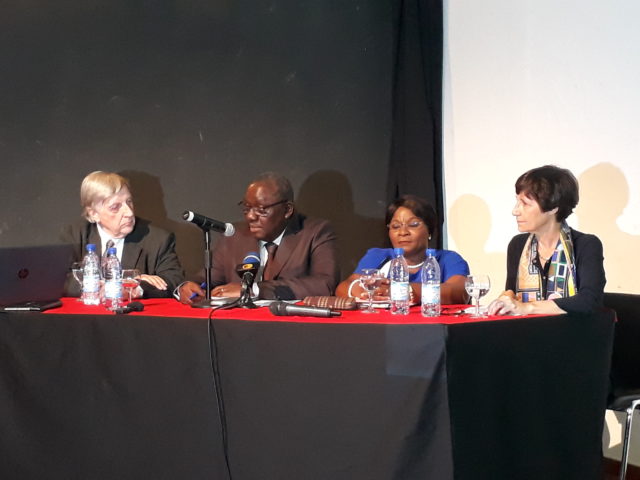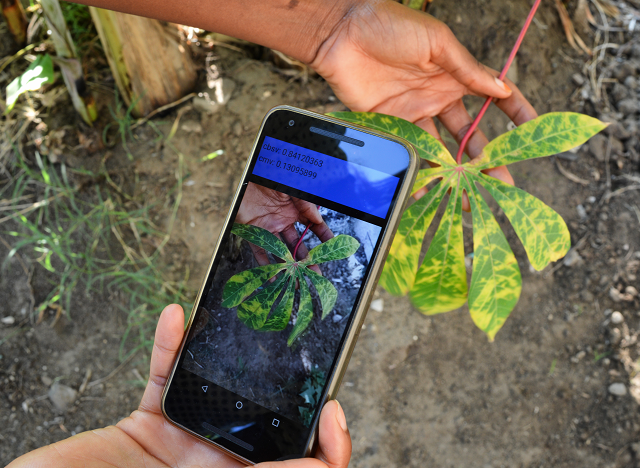Scientists from the Global Cassava Partnership for the 21st Century (GCP21) will meet this year to create a road map for eradicating cassava viruses in Africa, where viral diseases currently destroy about 30% of annual production, and to produce guidelines for preserving and evaluating African cassava landraces.
The GCP21 is busy celebrating its 10th anniversary with the organization of two international conferences in 2013. With 45 member institutions working on research and development of cassava, GCP21 is a global alliance for improving the productivity of a crop that more than 700 million people rely on worldwide. It acts as a forum for cassava issues, leverages research and development by facilitating dialogue among farmers, stakeholders, producers, researchers, and donor agencies via scientific meetings, to collectively seek smart strategies, funding opportunities, and catalyze solutions to technical challenges in areas such as cassava genomics.
“The GCP is an important actor within Roots, Tubers and Bananas (RTB)”, said Clair Hershey, the leader of the cassava program and the RTB focal point at the International Center for Tropical Agriculture (CIAT) in Cali, Colombia. “Its main function is as a convening mechanism for a triennial cassava symposium, but also for smaller, targeted discussions on strategic issues in cassava technology development”.
The most recent conference, which took place in Kampala, Uganda, in June 2012, gave birth to the Global Cassava Modeling Consortium, a loose network of scientists sharing and analyzing current cassava research and historical data. As it grows, that network will share experiences with cassava farmers across the tropics, and help them to turn their farms into field stations in the process.
The 3rd GCP21 Strategic Meeting, which will take place in Bellagio, Italy, in May 2013, will be focused on a daunting question: Is it possible to eradicate cassava viruses in Africa? The select group of 32 scientists and developers from 24 institutions who attend that meeting will focus on the use of a range of technologies to efficiently control cassava viruses.
“Considering the size of the task and the complexity of implementing such a plan in Africa, for political and administrative issues, it is certainly a huge task, but considering the paramount importance of cassava viruses in the continent, it is worth undertaking” said James Legg, a virologist from the International Institute of Tropical Agriculture (IITA).
 “We realize that Africa is a big continent and that the task is immense and difficult, but we also realize that similar tasks have been accomplished for several human diseases and several viral plant diseases in the world, so why not for cassava viruses in Africa?” said GCP21 Director Claude Fauquet. “At stake, there is a minimum of 45 million tons of fresh cassava to save each year – 30% of the total African production with a market value of $4 to $10 billion. Furthermore, developing an eradication system for cassava viruses would also prevent other diseases from spreading rapidly, and would improve and value the development of a cassava seed system, so gains would be tremendous for the crop. Even a partial, regional pilot test would be hugely beneficial, as it could serve as a model for future continent-wide application.”
“We realize that Africa is a big continent and that the task is immense and difficult, but we also realize that similar tasks have been accomplished for several human diseases and several viral plant diseases in the world, so why not for cassava viruses in Africa?” said GCP21 Director Claude Fauquet. “At stake, there is a minimum of 45 million tons of fresh cassava to save each year – 30% of the total African production with a market value of $4 to $10 billion. Furthermore, developing an eradication system for cassava viruses would also prevent other diseases from spreading rapidly, and would improve and value the development of a cassava seed system, so gains would be tremendous for the crop. Even a partial, regional pilot test would be hugely beneficial, as it could serve as a model for future continent-wide application.”
The immediate goal of the meeting is to create a road map, a Virus Eradication Plan for Cassava in Africa and publish it as a white paper, with the hope that it will serve as a reference and a working document for scientists writing grant proposals and for donors.
But that isn’t the only thing on the CGP21 agenda this year. A second meeting on cassava landraces is scheduled in June 2013 at IITA offices in Tanzania. The meeting’s goal is to deliver products such as draft standard operating procedures to collect, evaluate, preserve and identify these landraces and a roadmap to start the work in East and Central Africa.
“Most African cassava landraces aren’t in the international collections, and even if they are, there is uncertainty about their identity versus what is used by the farmers. In other words, there is not a unique source of referenced genetic material for these landraces available to scientists”, Fauquet explained. “We need to think bold and big – and now is the time to do so!”
C.M. Fauquet and J. Tohme are co-chairs of the Global Cassava Partnership for the 21st Century.
Contact:
c.fauquet@cgiar.org
j.tohme@cgiar.org
On the Cassava Modelling Consortium:
James Cock
j.cock@cgiar.org
Read more:
The Global Cassava Partnership for the 21st Century (GCP21)/ C.M. Fauquet, N.J. Taylor, J. Tohme in Tropical Plant Biology, March 2002, Volume 5, Issue 1, pp 4-8. http://goo.gl/d6eBW
Is Cassava the Answer to African Climate Change Adaptation? Andy Jarvis, Julian Ramirez-Villegas, Beatriz Vanessa Herrera Campo, Carlos Navarro-Racines Tropical Plant Biology, March 2002, Volume 5, Issue 1, pp 9-29. http://goo.gl/5xqjD




